Diamonds are Forever - A proof Tale
The James Bond movie ' Diamonds are forever ' is still watched with awe . Diamonds have held the imagination of people for long . The diamond economy is a big one and history is full of stories connected with diamonds . Ladies have cherished and loved diamonds . These precious stones have been symbols of beauty and love . Jewelers belonging to ages specialized in fulfilling the aspirations of the women who loved diamond jewelry . Diamonds evoked honor and prestige . The faithful gave away their prized diamonds to the Lord Almighty . They did so due to their prayers . There were people like the famous Devadasi Bangalore Nagarathnamma ( 1878 1952 ) who sold away her diamond jewelry in order to fund the construction of the temple for Saint Thyagaraja in Thiruvaiyaru . Her wealth had been worth 200,000 Rs in 1920 and she had a fabulous collection of diamond jewelry . She loved uncut diamonds and one of her rings was embedded with a diamond as big as an arecanut.
Her fabulous diamond choker was much talked about . Diamond jewelry was considered to be a symbol of prestige and was a sign of great affluence . A lady possessing a diamond necklace , bangles , 65 nose pins , ring and earrings was considered to be a person of high status . The lady would let her friends and relatives use it on special occasions . The ownership rested with her but her entire circle relished the ornaments . Gold was a sign of security but diamonds stood for status . A woman in Conjeeverams wearing diamond jewelry was compared to a deity . Appayya Dikshithar's grandfather Vakshasthala Dikshithar was known for his spontaneous compositions . One day, the ruler of Vijayanagara, Sri Krishna Deva Raya and his consorts Chinna Devi and Tirumala Devi visited the Kanchipuram Varadaraja Temple . Both the youthful consorts were draped in pattu and decked with the best of diamonds.
Dikshithar composed a poem in which he stated that Lord Varadaraja just checked his Vakshasthala (chest) to see if Goddess Mahalakshmi who had been ever resident on his chest had disembarked . This composition got him the name Vakshasthala Dikshithar .
Diamonds are known as Vajralu in telugu. Vajra happens to be the weapon of lord Indra and it is the most powerful amongst its class. This hard come attractive gemstone is the hardest substance. Diamonds are also known as kamalalu or ravalu in telugu. They are known as vairam in tamil and heera in hindi. India was the source for diamonds those days. The diamond mines of India produced some of the best diamonds known to man. Chattarsal (1649 - 1731) of Bundelkhand was a very powerful ruler. He had opposed the mughals tooth and nail. This great warrior wanted to establish a large hindu kingdom and therefore was seeking a great fortune. It was during one of his sojourns on a full moon night in 1683 that he happened to meet his spiritual mentor Prananath(1618 - 1694). Chhatrasal was highly impressed by Prananath. The guru had actually welcomed Chhatrasal by calling him Chhatrasal. Swamy pranananth gave his own sword to Chhatrasal and covered his head with a scarf, he also stated, “Chhatrasal, May you ever be victorious. You will discover diamond mines in your land and this will help you to become a great emperor”. His prophecy came true and Chhatrasal became wealthy and powerful.
The diamonds of India were sacred and the crown of Yudhisthira was supposed to have been fixed with the large diamond. The temple at somnath was plundreed by Muhammad of Ghoru and he took away the large diamond that was dound on the jothirlingam. The world famous Kohinoor diamond was surreptitiously taken away by the British from India. Indian diamond cutters created several diamond cutting patterns. This was done in order to ensure that the diamond looked the best. Meanwhile a number of Gem merchants visited India in search of diamonds and other gemstones. The famous French gem merchant Jean Baptiste Taver nier (1605 to 1689) was known to have been an expert on diamonds. He is best known for his 1616 AD discovery / purchase of the 116 carrot tavernier blue diamond which was sold to Louis XIV of France in 1668 for 120,000 livers (equivalent to 172,000 ounces of pure gold). The writings of Tavernier show that he was a cultural anthropologist. He traveled into India and visited the court of the Mughal emperor Shah Jahan. Tavernier had also been to the diamond mines at Golkonda in south India.
The huge discovery of high quality diamonds in Africa opened the floodgates of international diamond trade. Several entrepreneurs and diamond cutters began to enter the field. The renaissance in Europe had preceded the finds. They were also accompanied by the benefits that accrued due to the industrial revolution in europe. This had been funded by the benefits of colonialism. Therefore diamond cutting reached a very high level of excellence and penetrated the world of mediocrity while the best took over.
Time passed by and diamond cutting reached its zenith. This was primarily due to the efforts of highly skilled diamond cutters from the Jewish community. An engineer by education and hailing from a jewish family of diamond cutters from poland, marcel tolkowsky(1899 - 1991) had the natural flair and background to bring out the best. He is acknowledged as the father of the modern round brilliant diamond cut. His mathematical calculations considered both the brilliance and the fire of the stone. This was used to set international standards. Talkowsky systematically studied the grinding of diamonds and this became part of his Phd topic at the university of london. The journey that began in India finally resulted in the global diamond revolution.
Indians and particularly the ones from the south were known for their close set diamond jewelry. They considered this method or setting to be the best and the safest. Diamond smiths were known to bring out the best with regard to the same. They would ensure that the stones were set properly while also taking sufficient care with regard to the use of gold. Too much gold took away the beauty of the diamond and therefore these diamond smiths and jewelers ensured that a balance was maintained. They used to spend sufficient time on each ornament that was made and sold by them. The high and mighty of society used to be the lifelong patrons of these perfectionists.
Grandhi veerraju sons, cocanada has in fact created a lovely indian catalog for diamond jewelry. The leading jewelers of the country used to keep this as their guide. A number of beautiful ornaments came out as a consequence of this quest which sought perfection in excellence.
The great cotton merchant Chennimalai Krishna chetty was exposed to excellence in diamond jewelry. This connoisseur decided to make the best diamond ornament for his wife and he succeeded. This huge diamond necklace became the most popular one belonging to its ilk in western tamilnadu. This was created by the best diamond smith of those times. The smoothness, balance between gold and diamonds, design made it the most attractive and sought after jewel.
A limited edition of this Pedda haram is being offered by PAR Rajesh Govindarajulu jewelers to the lovers and connoisseurs of exquisite diamond jewelry. Each piece will be finely crafted by hand and will also be numbered. A certificate and the story as shared above will be part of the legacy. It is earnestly hoped that each one of the acquirers of this fantabulous piece will ensure that our jewelry heritage is transferred to the generations to come.
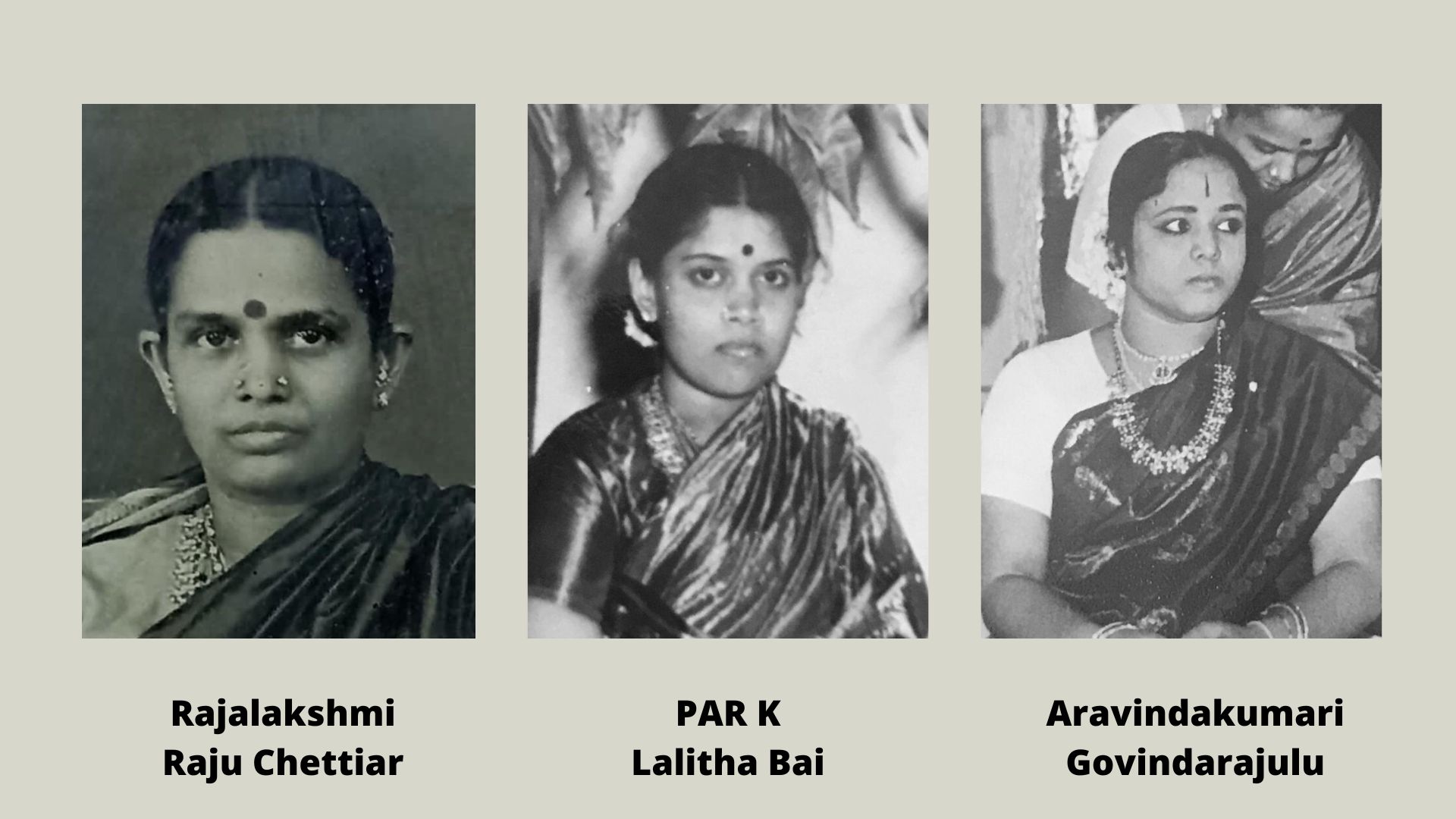
The jewelers of Coimbatore and their relatives worship Goddess Kannika Parameswari on Vysial Street . They used to put all the family jewelry on the deity for the entire Navarathri . The seventh day alankaram / decoration was known as Thavazh Krishnan - Thandha Pushpa Palakku . The Goddess would be made by the merchants themselves for the entire festival period . They used to decorate the idol every day in a particular style . The seventh day would witness the above mentioned decoration of Ambal. It was a time when the Kattalai Dharar , P.A.Raju Chettiar & Family would be present in full. The deity used to be decorated with ornaments belonging to the members of the family. All the diamond necklaces would glisten on the deity. It was kind of an offering or 'Naivedyam'. For wealth was meant to serve several purposes.
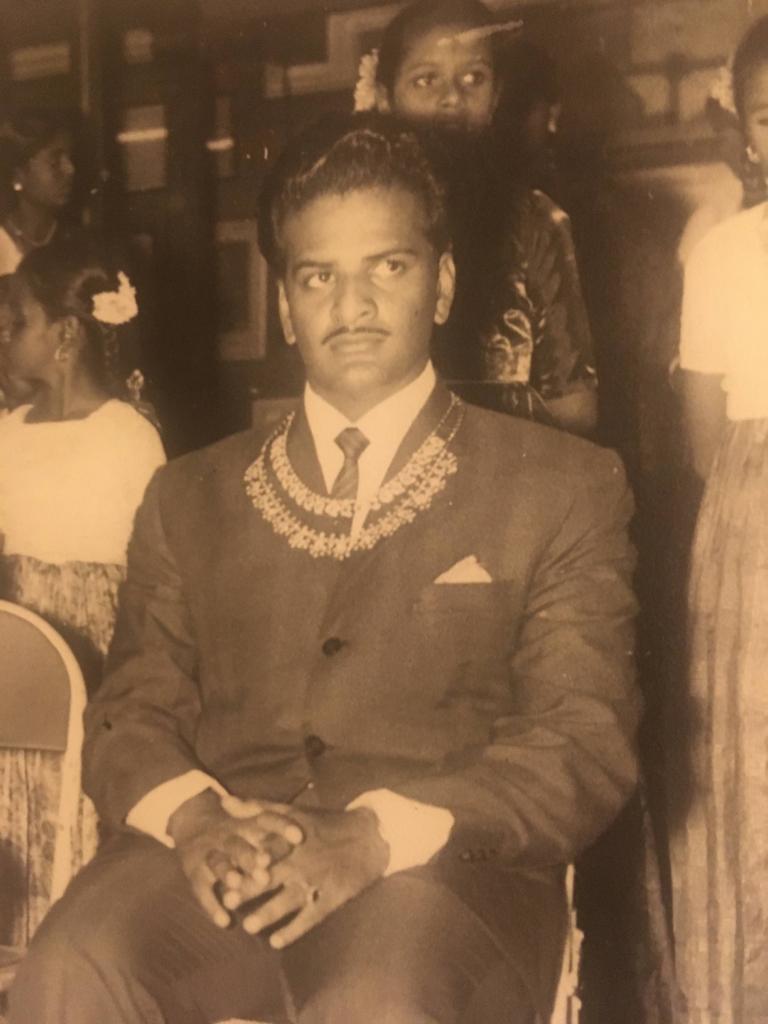 The most famous among the jewels belonging to the family of P.A.Raju Chettiar was the Pedda Haram or the long and large diamond necklace . It was close set and consisted of a number of similar looking pieces strung together on a smooth chain. The 'Peddha Haram' would flow over the body and would feel smooth. One could work with it in or go to bed too. It was made in a marvelous manner and could not be damaged at all. One could wear it casually and need not be frozen with it. My great grandfather P.A.Raju Chettiar had originally kept it as a family jewel for : many years. It had been acquired from one Chennimalai Krishna Chetty during the thirties of the twentieth century. Every niece and nephew would wear it for their wedding. All the relatives , friends used it on special occasions. It was perhaps one the most used diamond necklaces of Coimbatore.
The most famous among the jewels belonging to the family of P.A.Raju Chettiar was the Pedda Haram or the long and large diamond necklace . It was close set and consisted of a number of similar looking pieces strung together on a smooth chain. The 'Peddha Haram' would flow over the body and would feel smooth. One could work with it in or go to bed too. It was made in a marvelous manner and could not be damaged at all. One could wear it casually and need not be frozen with it. My great grandfather P.A.Raju Chettiar had originally kept it as a family jewel for : many years. It had been acquired from one Chennimalai Krishna Chetty during the thirties of the twentieth century. Every niece and nephew would wear it for their wedding. All the relatives , friends used it on special occasions. It was perhaps one the most used diamond necklaces of Coimbatore.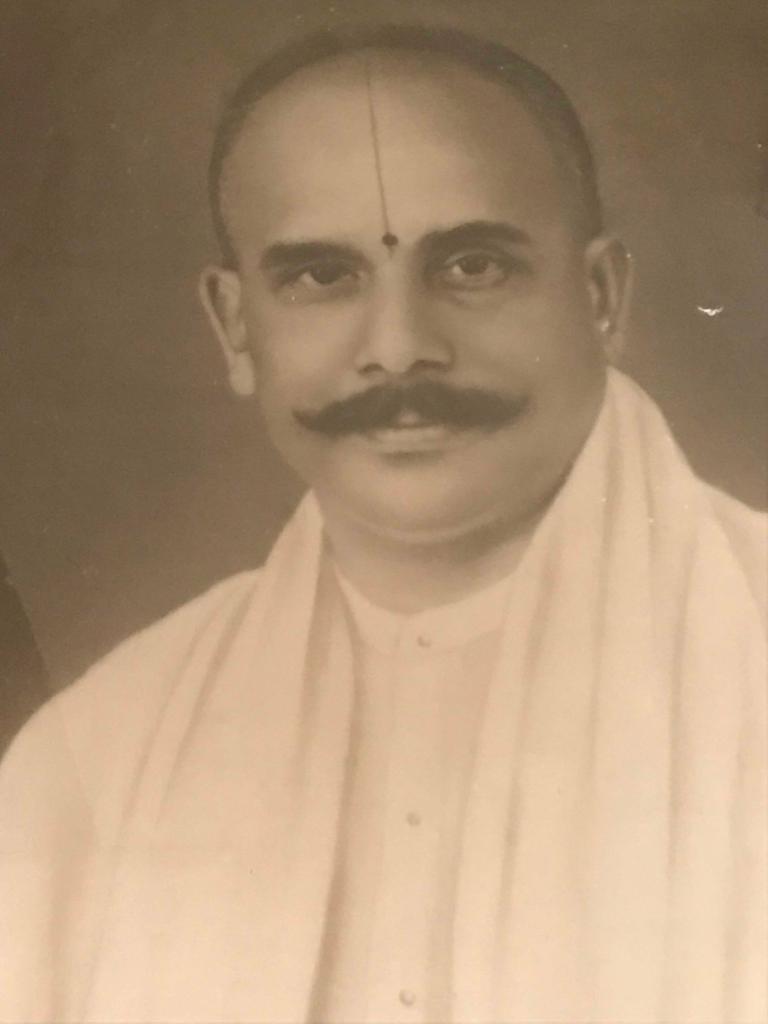
My grandmother Lalitha Bai got married to my grandfather , the diamond expert Krishnan in 1942. She was made to wear the big necklace as a bride . It belonged to the family for a few more years and then became the private possession of my grandmother Lalitha Bai . Her younger co sister Indrani Viswanathan joined the family in 1944 and she had worn it too . Subsequently a similar looking piece was made for Indrani . Thereafter every bride and groom in our family would compulsorily wear these harams . My grandmother used to call it ' Peddha Haram ' , meaning the big neck ornament . My mother Aravindakimari , father Govindarajulu and several others had used it . Grandmother used to give it to everyone and request them to wear it . She used to clean it up and keep it inside the locker . Wow , she had an amazing memory . She would know by heart the contents of all her jewel boxes . She had a musical jewel box those days . By the way , all her ornaments were accounted for and she used to pay wealth tax . However all her wealth in the form of jewels was used by many . Grandmother would count the number of pieces in the ' Pedda Haram ' before putting it back into the jewels locker each time .
The Pedda Haram was the identity of our family . If any of our family members were found with it on them , the visitors to the marriage would find that they came from our family . This was the most popular diamond necklace in town . All the women belonging to the trading fraternity to 65 knew about it . Several leading industrial and mill owner family women had worn it for their weddings . It was considered to be an honor to wear it . My grandmother Lalitha Bai and her co sister Indrani Viswanathan used to attend all the weddings together in the finest of Conjeevarams and their respective diamond harams . Both of them would sport large diamond bangles , diamond ear studs and nose pins too . People used to treat them like royalty . They were lucky to be among the earliest in this region to own diamond waist belts ( oddiyanam ) . My grandmother had worn her belt which contained her initials RKL studded with diamonds almost until the birth of my father . She was known to wear a lot of diamond ornaments
those days . However she carried herself well with them . A lot of cooking and housework used to keep her busy and she would attend to the same with her diamond jewelry on . Home makers would grind chutney , or grind dough or make chapatis with their diamond bangles on their person . Those days , the ornaments were functional and not stuck up !
The members of our family would casually let others use their ornaments . It happened by the drop of a hat . They had been imbibed with the concept called ' sharing ' . Many wanted to copy the ' Pedda Haram ' design and make one for themselves . They used to take photos , draw the design or later get their photo copied too . I am yet to see someone who has made it the same way . Several of my friends have told me that we should celebrate the design and the tradition of the times by creating numbered pieces on a limited basis with a stamp of authenticity . That is yet to happen .
The deities at home would be decked with the ' Pedda Haram ' on festive occasions . The flexible ornament was known for its sturdiness and it was a rare virtue . It looked elegant in spite of the fact that big stones were close in order to make it . In fact , people preferred an open setting with smaller stones unless it was a straight line piece . Still , the superb design and setting ensured its beauty and aesthetics . Grandmother was deeply devoted to Lord Guruvayurappa and other deities . Small pieces from her favorite piece were offered to them after her time . It was her way of thanking God for the wealth bestowed on her . Lalitha Bai S Pedda Haram ' was the most sought after ornament not because of its financial value but also because of the honor , status and value system that was associated with it . Those were times when individuals enjoyed their personal wealth with others . Today , most of the possessions have become very personal . The older generations understood that the wealth of one had many uses . They led a utilitarian life . The ' Pedda Haram ' of Laliltha Bai represents precisely that .
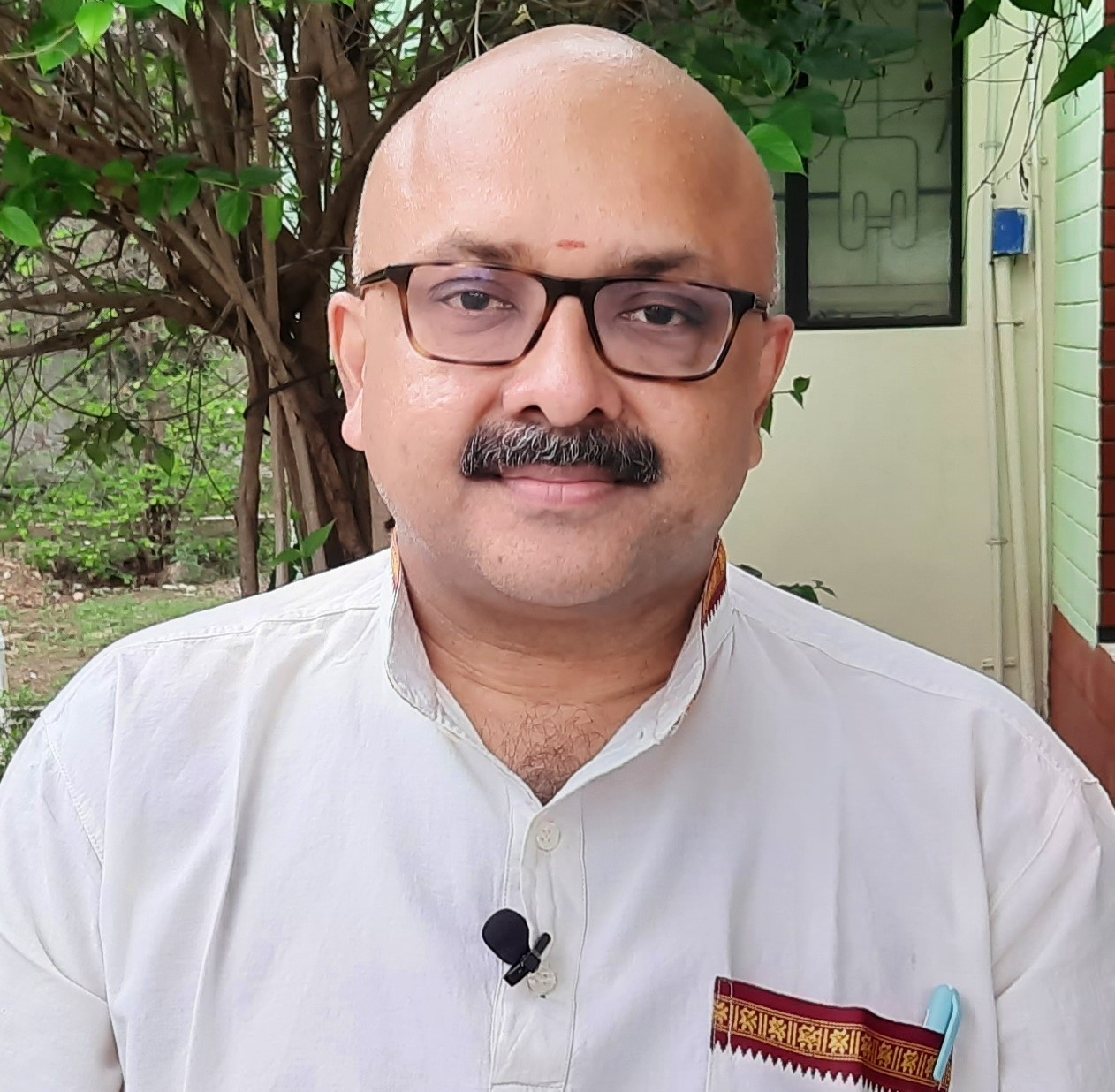
Mr. Rajesh Govindarajulu is one of the founding members of The Verandah Club Pvt. Ltd. He is a leading columnist, historian, jeweler, entrepreneur, and a heritage enthusiast who is earnestly working to revive the past in the light of the present. Experiential learning about the history of Coimbatore is his main course of interest and he is also a panel member of many colleges in the city.
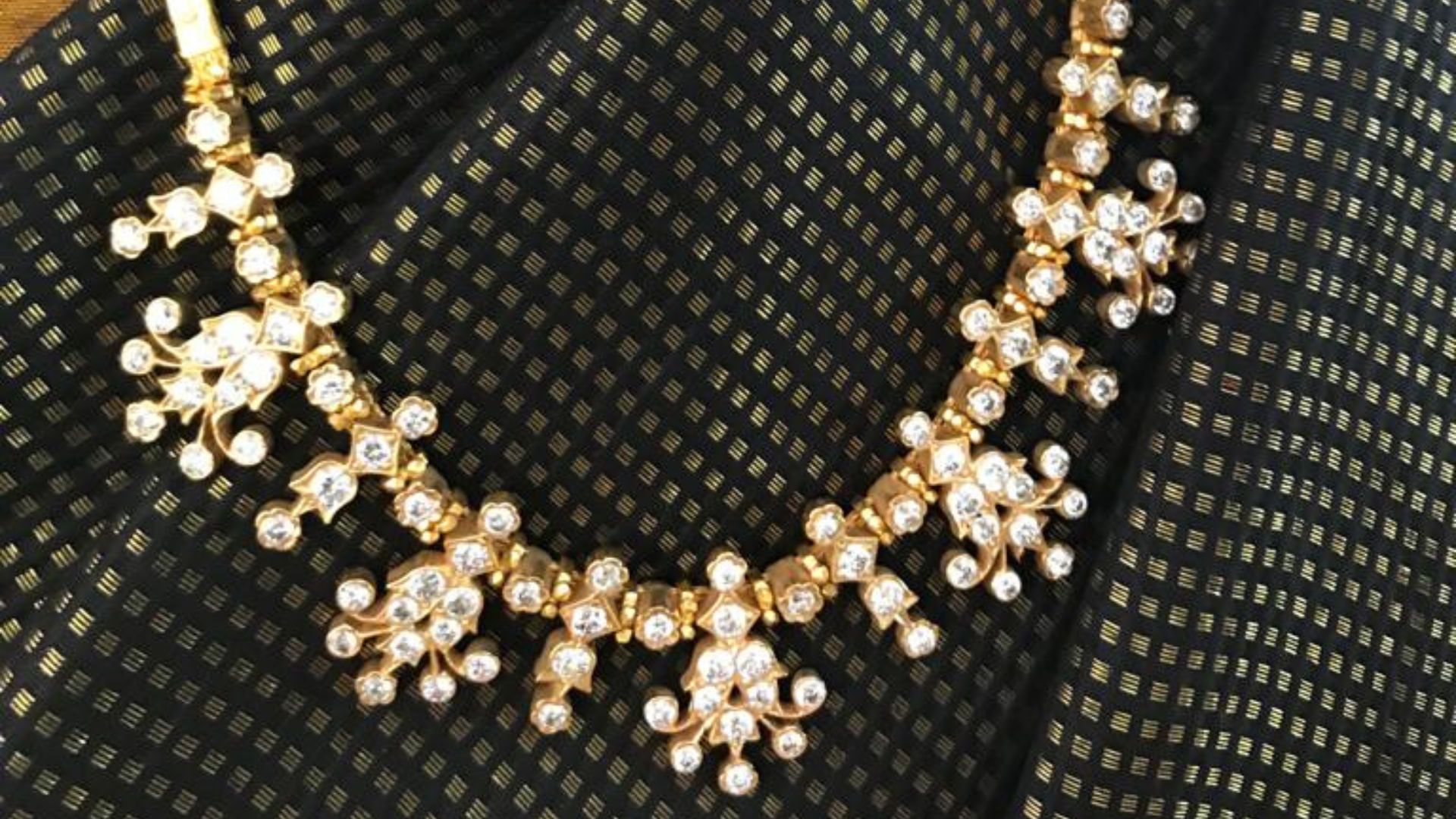


 The most famous among the jewels belonging to the family of P.A.Raju Chettiar was the Pedda Haram or the long and large diamond necklace . It was close set and consisted of a number of similar looking pieces strung together on a smooth chain. The 'Peddha Haram' would flow over the body and would feel smooth. One could work with it in or go to bed too. It was made in a marvelous manner and could not be damaged at all. One could wear it casually and need not be frozen with it. My great grandfather P.A.Raju Chettiar had originally kept it as a family jewel for : many years. It had been acquired from one Chennimalai Krishna Chetty during the thirties of the twentieth century. Every niece and nephew would wear it for their wedding. All the relatives , friends used it on special occasions. It was perhaps one the most used diamond necklaces of Coimbatore.
The most famous among the jewels belonging to the family of P.A.Raju Chettiar was the Pedda Haram or the long and large diamond necklace . It was close set and consisted of a number of similar looking pieces strung together on a smooth chain. The 'Peddha Haram' would flow over the body and would feel smooth. One could work with it in or go to bed too. It was made in a marvelous manner and could not be damaged at all. One could wear it casually and need not be frozen with it. My great grandfather P.A.Raju Chettiar had originally kept it as a family jewel for : many years. It had been acquired from one Chennimalai Krishna Chetty during the thirties of the twentieth century. Every niece and nephew would wear it for their wedding. All the relatives , friends used it on special occasions. It was perhaps one the most used diamond necklaces of Coimbatore. My grandmother Lalitha Bai got married to my grandfather , the diamond expert Krishnan in 1942. She was made to wear the big necklace as a bride . It belonged to the family for a few more years and then became the private possession of my grandmother Lalitha Bai . Her younger co sister Indrani Viswanathan joined the family in 1944 and she had worn it too . Subsequently a similar looking piece was made for Indrani . Thereafter every bride and groom in our family would compulsorily wear these harams . My grandmother used to call it ' Peddha Haram ' , meaning the big neck ornament . My mother Aravindakimari , father Govindarajulu and several others had used it . Grandmother used to give it to everyone and request them to wear it . She used to clean it up and keep it inside the locker . Wow , she had an amazing memory . She would know by heart the contents of all her jewel boxes . She had a musical jewel box those days . By the way , all her ornaments were accounted for and she used to pay wealth tax . However all her wealth in the form of jewels was used by many . Grandmother would count the number of pieces in the ' Pedda Haram ' before putting it back into the jewels locker each time .
My grandmother Lalitha Bai got married to my grandfather , the diamond expert Krishnan in 1942. She was made to wear the big necklace as a bride . It belonged to the family for a few more years and then became the private possession of my grandmother Lalitha Bai . Her younger co sister Indrani Viswanathan joined the family in 1944 and she had worn it too . Subsequently a similar looking piece was made for Indrani . Thereafter every bride and groom in our family would compulsorily wear these harams . My grandmother used to call it ' Peddha Haram ' , meaning the big neck ornament . My mother Aravindakimari , father Govindarajulu and several others had used it . Grandmother used to give it to everyone and request them to wear it . She used to clean it up and keep it inside the locker . Wow , she had an amazing memory . She would know by heart the contents of all her jewel boxes . She had a musical jewel box those days . By the way , all her ornaments were accounted for and she used to pay wealth tax . However all her wealth in the form of jewels was used by many . Grandmother would count the number of pieces in the ' Pedda Haram ' before putting it back into the jewels locker each time .
